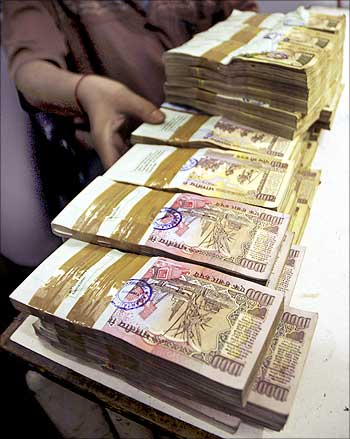The Indian Air Force will order 37 additional Pilatus trainer aircraft from Swiss manufacturer Pilatus Aircraft Company, over and above the 75 trainers the IAF has already contracted for Rs 2,900 crore. That will take to 112 the number of Pilatus PC-7 Mark II trainers on order from the IAF.
A top IAF official said, “The contract for 75 Pilatus trainers, which was signed last year, includes an options clause that allows India to order an extra 50 per cent of the contracted number of aircraft at the same price as the first 75 trainers. We will exercise this options clause this month.”
The first 75 Pilatus trainers were purchased at Rs 30 crore per aircraft. At that price, the additional order will be worth about Rs 1,250 crore to Pilatus Aircraft Company.
The first three PC-7 Mark II aircraft have already been delivered by Pilatus. The IAF official said 14 trainers, nearly a full squadron, would be delivered to the IAF by June. The IAF pilots’ course that begins initial training in June will learn to fly on the PC-7 Mark II.
This is an enormous relief to the IAF. Its longstanding basic trainer aircraft, the indigenous HPT-32 Deepak, has been grounded since a crash in July 2009. A total of 19 pilots have died while flying this aircraft. Since then, IAF rookie pilots have undergone a greatly curtailed Stage-1 training (as basic training is called) on the Kiran Mark-I trainer, a complex aircraft normally flown by pilots who have already learned basic flying on a simpler machine. This compressed training has placed a question mark over the flying ability of recent IAF batches.
But the course that begins training in June will fly a full training syllabus of 65-70 hours on the PC-7 Mark II in Stage-1 training before they commence 65-70 hours of Stage-2 training on the Kiran trainer. After that, they graduate to Stage-3 training -- 65-70 hours on the Hawk Advanced Jet Trainer -- before joining a frontline combat fighter squadron.
Even after exercising the option for 37 more PC-7 Mark II aircraft, the IAF will need 71 more trainers to meet its overall requirement of 183 basic trainer aircraft. Earlier, Bangalore-headquartered Hindustan Aeronautics Ltd was to design and build 108 aircraft, dubbed the Hindustan Turbo Trainer -- 40 (HTT-40). But the MoD scrapped HAL’s proposal last September since its trainers would cost significantly more than those on offer from Pilatus.
The Pilatus PC-7 Mark II offers far more safety and training features than the vintage HPT-32, which did not even have an ejection system; in emergencies, pilots ejected manually. The HPT-32’s obsolete instrumentation and avionics restricted training to good weather. Its cockpit had no recording equipment that could monitor trainee pilots while they were flying solo. Unlike the older aircraft, the PC-7 Mark II can perform aerobatics, and train the rookie pilots on instrument and night flying and basic tactical operations.
The PC-7 Mark II is a hybrid aircraft, in which a PC-9 airframe has been mated with a smaller PC-7 engine to lower procurement, flying and maintenance costs. The trainer is in service with several air forces, including South Africa and Malaysia.










